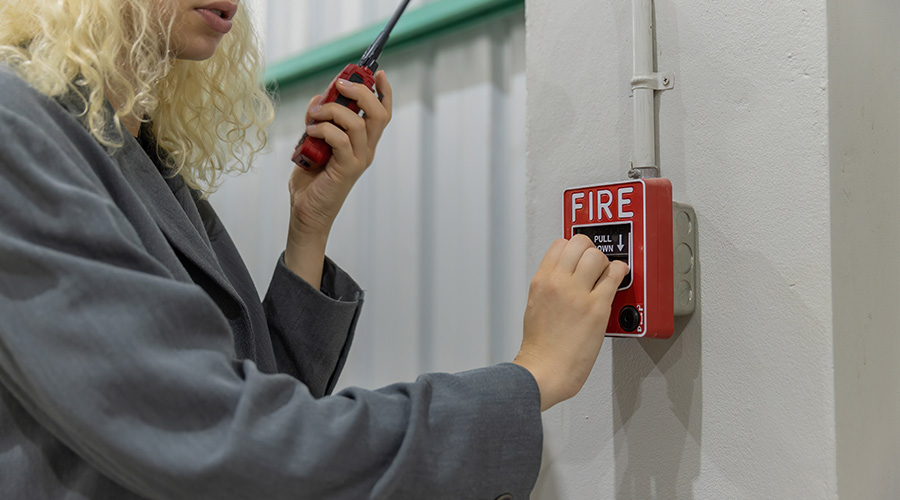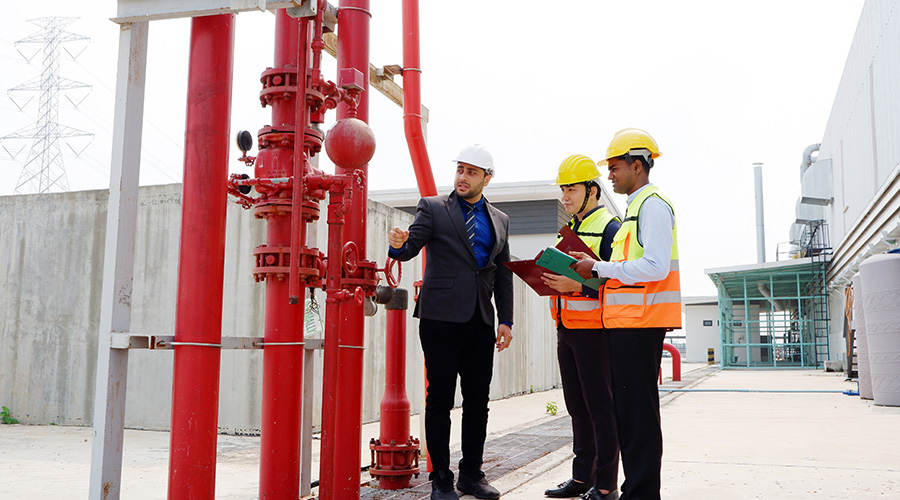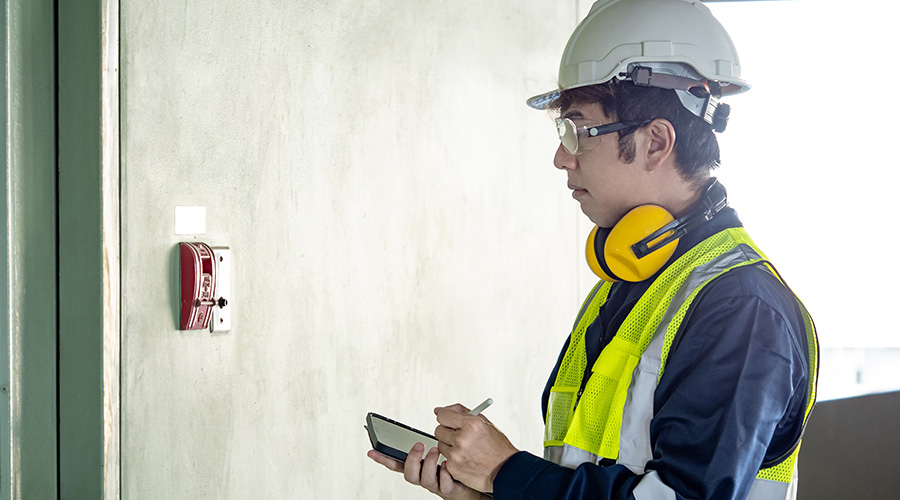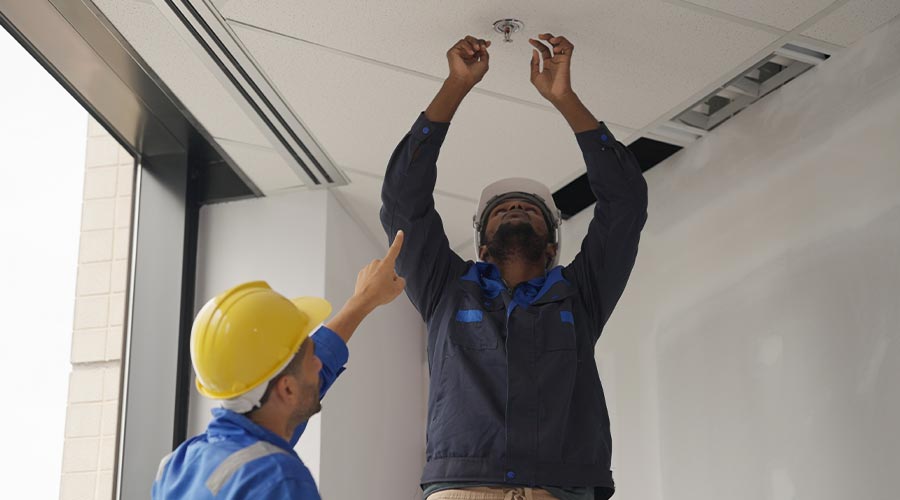Rules Regarding Nuisance Fire Alarms
Can facilities eliminate manual pull stations from fire alarm systems?
By Wayne D. Moore and Larry D. Rietz, Contributing Writers
All facilities should have a long-term plan in place to provide quality inspection, test, and maintenance of the fire alarm system. It is, in fact, the only way to receive the full value of the costs associated with installing the system in the first place.
The inspection, test and maintenance plan should include the manufacturer’s representative of your system as that is the only way to receive important software and firmware updates and required programming changes demanded by modern fire alarm systems. This is also true of any attempt to upgrade a fire alarm system; the manufacturer’s representative is needed to provide accurate information and provide valuable warranties for the changes made.
This Q&A series covers questions relating to ongoing maintenance and system replacement of fire alarm systems in accordance with NFPA 72.
Does NFPA 72 permit me to eliminate manual pull stations from my fire alarm system to eliminate nuisance alarms?
For most facilities the answer is no. However, in some cases, the answer may be yes, depending on the fire protection provided in the facility and depending on the occupancy.
If you are experiencing nuisance alarms related to manual pull stations, you should employ a licensed fire protection engineer to investigate the issue and provide a qualified answer for your exact facility. There are low-cost solutions that can be provided to reduce or eliminate nuisance alarms related to manual pull stations. The authority having jurisdiction (AHJ) will not automatically allow the removal of any installed fire alarm system component.
Am I permitted to address false or nuisance alarms in my facility?
Yes. As a matter of fact, the local jurisdiction will require that you address any false or nuisance alarms that occur in your facility. If you are experiencing false or nuisance alarms, either your original system designer or installer failed to perform their job correctly or something changed in the environment or operation of your building. In either case you will be required by the AHJ to address the problem, or you could potentially face increasing fines and penalties.
NFPA 72 provides guidance in the Annex describing areas and environments to avoid in order to eliminate false or nuisance alarms. This information should have been used in the design and installation of your fire alarm system. However, it is possible that the designer or installer did not follow the guidance and requirements found in NFPA 72.
First, the designer should have ensured all equipment was listed by UL for the expected conditions found in your facility. The installer and designer are cautioned in NFPA 72 to avoid any area where the following ambient conditions are found:
- Temperature below 32 degrees Fahrenheit (0 degrees Celsius)
- Temperature above 100 degrees Fahrenheit (38 degrees Celsius)
- Relative humidity above 93 percent
- Air velocity greater than 300 ft/min (1.5 m/sec)
In addition to temperature, humidity, and velocity variations, smoke detectors should operate reliably under such common environmental conditions as mechanical vibration, electrical interference, and other normal environmental influences. Typically, the designer would review all the information in NFPA 72 and the manufacturer’s listed instructions to ensure proper placement and number of smoke detectors in your facility. (The information regarding various influences on detection is found in Annex A to Chapter 17 of NFPA 72.)
It is possible that mechanical or electrical problems occurring within your facility could adversely affect the fire alarm system. For instance, if rooms containing fire alarm equipment become too hot or too cold, this could cause issues with the control equipment. Similarly, electrical surges or brown outs can cause fire alarm system malfunction issues including nuisance alarms.
If you are experiencing nuisance alarms, you need to properly investigate the potential cause. A fire protection engineer can investigate all the issues that may be causing nuisance alarms. A contractor often recommends upgrading your system without identifying the root cause of your problem.
If we are performing a remodel project, how does that affect my fire alarm system with respect to the NFPA 72?
The answer will be related to the size of the project, the impact of the project on the existing fire alarm system, and the need to expand the existing fire alarm system to be code compliant.
Typically, a large project will require planning and may require some form of fire watch if a large portion of the fire alarm system is going to be taken out of service. A smaller project also requires planning but obviously the overall impact of a portion of the fire alarm system taken out of service may not be as big a problem as a large remodel project. Check to see if your jurisdiction is enforcing NFPA 241, Standard on Safeguarding Construction, Alteration, and Demolition Operations. Regardless, it will be prudent to follow the Guide.
Do not rely on a contractor to answer this question for a specific project. Contact a fire protection engineer for an evaluation of your intended remodel project and its impact on your fire alarm and fire protection systems. If you do not have the correct information at the outset of the project, you may receive an unpleasant surprise at the end of the project when the AHJ refuses to approve the remodel or imposes a strict fire watch during the installation of fire alarm system upgrade requirements imposed by the remodel.
Also, during any remodel project, take care to ensure that nuisance alarms are not created by the construction activity.
Wayne D. Moore is a licensed professional fire protection engineer with over 45 years of engineering experience. Moore currently serves on the NFPA 72 Correlating Committee and Chapter 24 Technical Committee (past Chair), as well as being an editor of five editions of the “National Fire Alarm Code Handbook.”
Larry D. Rietz, is a NICET Level IV Certified fire alarm designer with more than 29 years of life safety industry experience. Rietz is Vice President and Global Service Line Leader for Fire Detection and Alarm for Jensen Hughes and serves on the NFPA 72 Chapter 24 and 12, 21, & 23 Technical Committees.
Related Topics:












